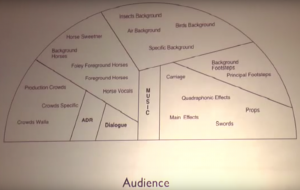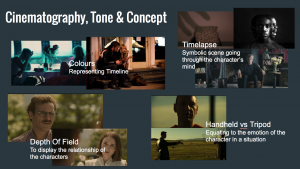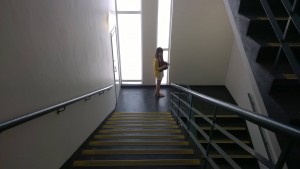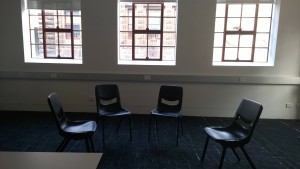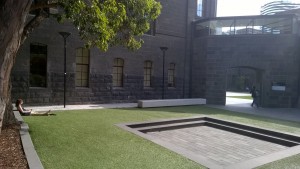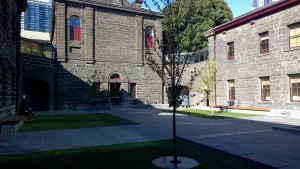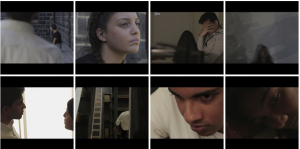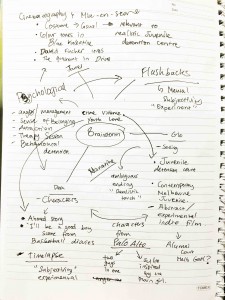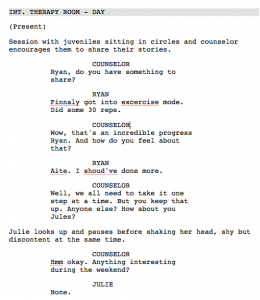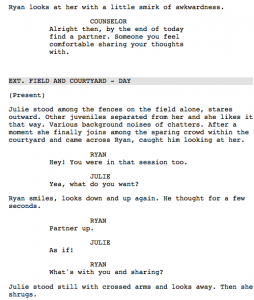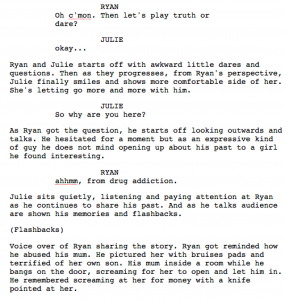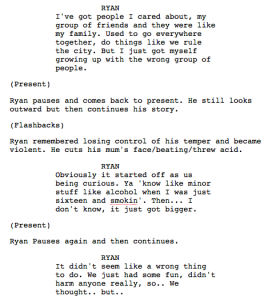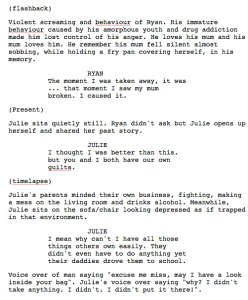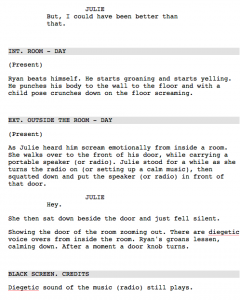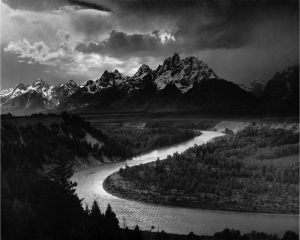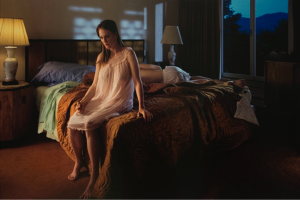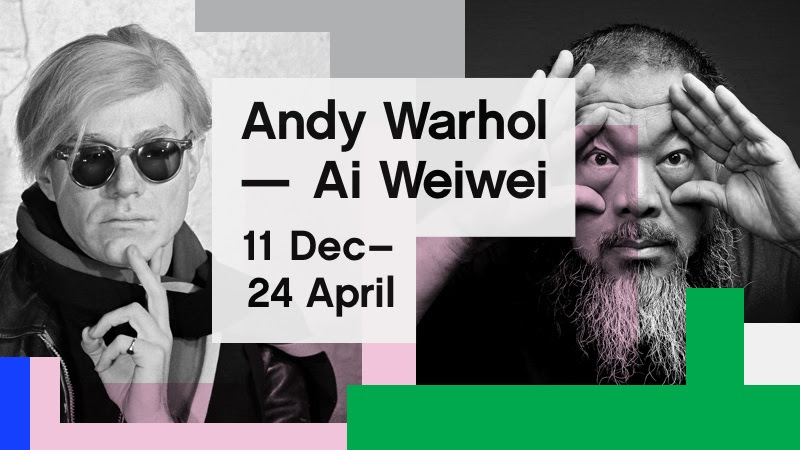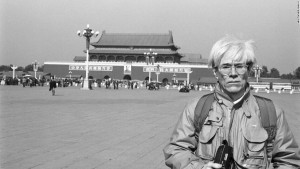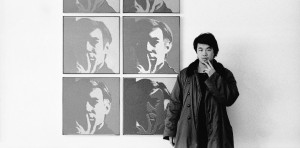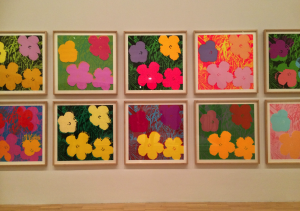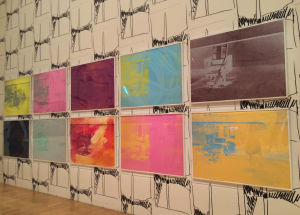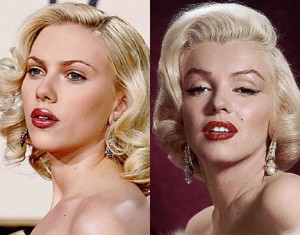The sound design of our film would be the experimental aspects for me into trying out different methods whilst producing the piece. What I’m aiming to play out for the audience is for them to hear a correlation of sounds to the character’s mental subjectivity. Whether it is the sound of running water to portray calmness and security, or upbeat intense bass sounds to portray discomfort or emotional instability. To put on unique kind of sounds orchestrated as a unity would be something I am excited to experiment on. Walter Murch mentioned..
Similarly, I would put the dialogue or voice overs as the more dominating sound for the film. But rather for music, I thought of putting it as a subtle supporter of the character’s situations, which takes its place more towards the back or the sides of the orchestra. Instead, environmental sounds are equally important to portray the character’s mental subjectivity and emotions in which then would be placed among the sides of the orchestra.
These sort of sounds curated are of environmental sounds that naturalistic and may take part in our film. We need these sounds to enhance the sense of realism and a more pronounced way of how individuals hear their surroundings. Characters are therefore correlated with environmental sounds as if that is what they are listening to or hearing what they take in from their environment. Again, that will contribute into conveying their mental subjectivity.
- Water running; taps, fountains, waves
- Wind
- Trams
- People chattering
- Sounds of doors
- Breathing
- Footsteps
Music and rhythmic melodies that I have found from free music archive websites are crucial into creating that aura of dramatic tones. These background musics allow us to generate a more impactful effects towards the audience. It serves as a bridge in connecting the character’s emotions and engagement with the audience.
Upbeat and jumpy tones (White Limit):
- Excitement
- Ryan meeting/engaging with Julie
- Playful
- Interests of Ryan’s emotions
Jumpy tone (White Limit) with mellow tensity:
- Discomfort
- Emotional instability
- Journey/ experiences
- Flashbacks
Rock electric guitar (Let’s Make Hate):
- Adventurous side- Characters sharing stories
- Hardship of past experiences
- Crimes
Celeste clinking bowls (taken from NGV):
- Water creates calmness
- Randomness, the unpredictable pattern- symbolises character’s psychological and mental disorders
“Let’s Make Hate” music symbolises adventurous side of the two characters into sharing their stories and form their relationship. Also, the electric guitar rock kind of sound relates to the hardship of experienced they had all the crimes they did and their time in juvenile detention centre to modify themselves. The chill, slower but mellow tone of this music symbolises their never ending journey that they keep going on and that life goes on. Furthermore, during their slow pace along walking on their journey it shows that they don’t have to rush, and that in learning about their identity they need to take their time. The mental disorders and “messiness” is symbolised by the clicking bowls on the water sounds that are random and not in order, which also portrays that we cannot always predict the human mind.
Voice overs and dialogue corresponding to the background music in our film is inspired by one scene from Gia Coppola’s Palo Alto (2013).

